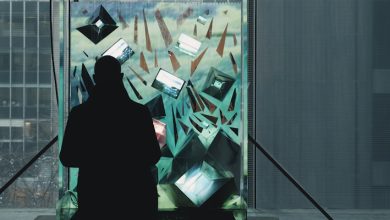The Role of AI in Creating and Valuing NFTs

- Understanding the basics of NFTs and AI technology
- Exploring the intersection of artificial intelligence and non-fungible tokens
- How AI algorithms are revolutionizing the creation of NFTs
- Valuing NFTs: The role of machine learning and predictive analytics
- Challenges and opportunities in using AI for NFT creation and valuation
- The future of NFTs: What role will AI play in shaping the market?
Understanding the basics of NFTs and AI technology
Understanding the fundamentals of Non-Fungible Tokens (NFTs) and Artificial Intelligence (AI) technology is crucial in comprehending the role of AI in creating and valuing NFTs. NFTs are unique digital assets that are indivisible and cannot be replicated, making them valuable in the digital space. AI technology plays a significant role in the creation and valuation of NFTs by providing automated solutions for generating and authenticating these digital assets.
Exploring the intersection of artificial intelligence and non-fungible tokens
Artificial intelligence (AI) and non-fungible tokens (NFTs) are two cutting-edge technologies that have recently gained significant attention in the digital world. The intersection of AI and NFTs opens up a world of possibilities for creators and collectors alike.
One way in which AI is being utilized in the NFT space is through the creation of generative art. Generative art refers to art that is created using algorithms and AI, resulting in unique and intricate pieces that can be tokenized as NFTs. This allows artists to explore new creative avenues and produce art that is constantly evolving and changing.
Additionally, AI can play a role in valuing NFTs by analyzing various factors such as rarity, demand, and historical sales data. By leveraging machine learning algorithms, AI can help determine the value of an NFT based on these factors, providing collectors with a more accurate assessment of its worth.
Moreover, AI can also be used to verify the authenticity of NFTs and prevent fraud in the marketplace. Through techniques such as image recognition and blockchain analysis, AI can ensure that NFTs are legitimate and that they have not been tampered with or duplicated.
Overall, the intersection of AI and NFTs represents a fascinating convergence of technology and creativity. By harnessing the power of AI, creators and collectors can explore new possibilities in the world of digital art and assets, paving the way for a more innovative and secure NFT ecosystem.
How AI algorithms are revolutionizing the creation of NFTs
AI algorithms have been at the forefront of revolutionizing the creation of NFTs in recent years. These algorithms play a crucial role in generating unique and engaging NFTs that resonate with collectors and art enthusiasts alike.
By utilizing machine learning and deep learning techniques, AI algorithms can analyze vast amounts of data to identify patterns and trends in the art world. This enables artists to create NFTs that are not only visually stunning but also culturally relevant.
One of the key advantages of using AI algorithms in the creation of NFTs is their ability to streamline the design process. These algorithms can automatically generate artwork based on predefined parameters, saving artists time and effort in the creation process.
Furthermore, AI algorithms can help artists experiment with different styles and techniques, allowing them to push the boundaries of their creativity. This can result in the creation of NFTs that are truly unique and innovative, attracting a wider audience of collectors.
Overall, AI algorithms have had a profound impact on the creation of NFTs, enabling artists to explore new artistic possibilities and reach new heights of creativity. As technology continues to evolve, we can expect AI algorithms to play an even greater role in shaping the future of NFT art.
Valuing NFTs: The role of machine learning and predictive analytics
Machine learning and predictive analytics play a crucial role in valuing non-fungible tokens (NFTs). These advanced technologies enable collectors and investors to make informed decisions about the worth of digital assets. By analyzing data trends and patterns, machine learning algorithms can predict the future value of NFTs more accurately than traditional methods.
Predictive analytics uses historical data to forecast future trends in the NFT market. By examining factors such as the rarity of an NFT, the artist’s reputation, and the demand for similar pieces, predictive models can estimate the potential value of a digital asset. This information empowers buyers and sellers to negotiate fair prices and make profitable investments.
Machine learning algorithms can also identify emerging trends in the NFT space, helping collectors discover undervalued assets before they become mainstream. By analyzing vast amounts of data, these algorithms can pinpoint patterns that human analysts might overlook. This gives investors a competitive edge in a rapidly evolving market.
Overall, the integration of machine learning and predictive analytics into the valuation process of NFTs has revolutionized the way digital assets are bought and sold. These technologies provide valuable insights that help stakeholders navigate the complexities of the NFT market with confidence and success. As the industry continues to grow, the role of AI in creating and valuing NFTs will only become more prominent and essential.
Challenges and opportunities in using AI for NFT creation and valuation
One of the main challenges in using artificial intelligence for NFT creation and valuation is the need for high-quality data. AI algorithms require a large amount of data to learn and make accurate predictions. However, the NFT market is relatively new, and there is a lack of historical data available for training AI models. This can lead to inaccuracies in valuing NFTs and creating new ones.
Another challenge is the complexity of NFTs themselves. Non-fungible tokens can represent a wide range of assets, from digital art to virtual real estate. Each type of NFT has its own unique characteristics and value drivers. AI algorithms must be able to understand these nuances to accurately assess the worth of an NFT. This requires sophisticated machine learning techniques and algorithms.
Despite these challenges, there are also opportunities in using AI for NFT creation and valuation. AI can help automate the process of creating NFTs, making it faster and more efficient. This can enable artists and creators to produce more NFTs and reach a larger audience. Additionally, AI can help identify trends in the NFT market and predict which assets are likely to increase in value.
Overall, the use of AI in creating and valuing NFTs has the potential to revolutionize the way we buy and sell digital assets. By overcoming the challenges and leveraging the opportunities presented by AI, we can unlock new possibilities in the world of non-fungible tokens.
The future of NFTs: What role will AI play in shaping the market?
As the market for NFTs continues to evolve, the role of AI is becoming increasingly significant in shaping the future landscape. AI technology has the potential to revolutionize how NFTs are created, valued, and traded. By leveraging machine learning algorithms, AI can analyze vast amounts of data to identify trends, patterns, and anomalies in the market.
One of the key ways in which AI is influencing the NFT market is through the generation of digital assets. AI-powered tools can assist artists in creating unique and personalized NFTs, helping them stand out in a crowded marketplace. These tools can also help collectors and investors in identifying valuable NFTs based on factors such as rarity, provenance, and market demand.
Furthermore, AI can play a crucial role in determining the value of NFTs by analyzing various factors such as historical sales data, creator reputation, and market sentiment. This can help ensure fair pricing and prevent price manipulation in the NFT market. AI algorithms can also facilitate the curation of NFT marketplaces by recommending relevant artworks to users based on their preferences and past behavior.
In conclusion, the integration of AI technology in the NFT market is poised to revolutionize the way digital assets are created, valued, and traded. By harnessing the power of AI, stakeholders in the NFT ecosystem can unlock new opportunities for growth, innovation, and collaboration.




